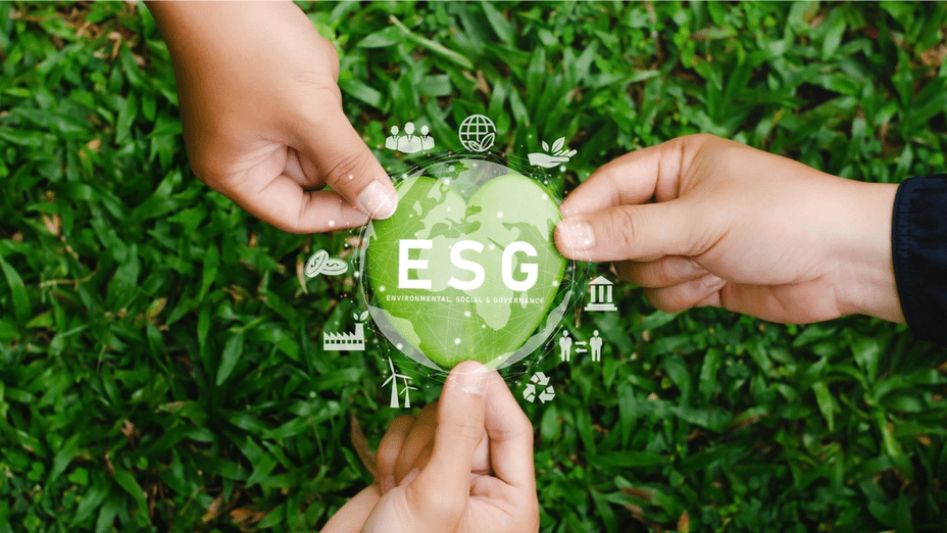ESG & Smarter Technology are committed to creating a more sustainable future for all. Our products and solutions help our customers be more efficient and protect the environment.
After receiving the devastating news that she had motor neuron disease, an incurable condition in which the patient’s muscles waste away to the point of paralysis, Scott-Morgan made a decision that would alter the course of her life. He utilized technology to design methods to keep his critical processes working, drawing on decades of expertise in robotics. He also devised an amazing mechanism to continue talking with people when he lost the ability to speak, recording 20,000 different phrases so that he could put together sentences in his own voice. Now, four years later, Scott-Morgan has formed a partnership with Lenovo, a worldwide technology corporation, with the goal of using artificial intelligence to build assistive-technology solutions for individuals with tough conditions all across the world. “I employed a lifetime’s worth of study to rewrite my own destiny,” says Scott-Morgan, who is active and successful to this day in their respective fields. “But what’s much more significant is that I now have the opportunity to rewrite the future for millions, and maybe even billions,” she said. “I see the formerly gloomy future as being tremendously bright with leaders like DXC Technology and Lenovo.”

Lenovo, a company that provides technology services and solutions and has over 63,000 employees across more than 66 countries, views the creation of a smarter world as one of its primary missions. The company is also pioneering environmentally friendly, inclusive, and responsible business practices for both itself and its customers. In today’s business world, companies are making pledges to enhance environmental, social, and corporate governance (ESG), which were originally voluntary but are now moving steadily in the direction of becoming required. The United States Securities and Exchange Commission, for example, has recently come closer to enforcing carbon disclosure, and it is possible that in the near future, businesses may be required to more accurately trace and reduce their footprints throughout their entire supply chains. However, putting these ideas into action is far easier said than done. According to a recent analysis published by McKinsey & Company, businesses are “far more conscious of how exposed they are to ESG-related challenges.” “Shareholders may be reassured by accounting disclosures that are substantial, consistent, and trustworthy.” However, the majority of these criteria have been missing from conventional methods of reporting on sustainability.
Tracking, measuring, and ultimately enhancing environmental, social, and governance (ESG) performance has been one of Lenovo’s primary focuses for many years, both internally and for its customers. Lenovo, which was recently recognized with the 2021 BDO ESG Award for excellence in reporting metrics, has just announced additional pledges to procure 90 percent of its power from renewable sources, cut one million tons of greenhouse gas emissions from its supply chain, and continue expanding accessibility for everyone. Lenovo, a company headquartered in Asia with offices located all over the globe, capitalizes on the worldwide variety that it has in order to invent ESG solutions internally and, if those solutions are successful, spread them out to customers.
Lenovo is using a data-backed framework to create environmental, social, and governance (ESG) solutions on a global scale, adhering to the Science-Based Targets initiative, which is a partnership between companies and institutions such as the United Nations Global Compact. This has resulted in innovations that have the potential to lead to ground-breaking change for enterprise customers as well as consumer customers. The senior vice president and chief legal officer of Lenovo, Laura Quatela, who is in charge of the business’s corporate responsibility policies, has said that the company is “helping to set the benchmark internationally for ESG.” “In addition to being an issue of good citizenship, ESG solutions offer revenue-generating possibilities for our corporate clients.” “These innovations guarantee that technology will be more environmentally friendly and accessible to everyone.”
Setting Sustainability Goals on a Global Scale
It is difficult to measure the effect of mitigation initiatives, despite the fact that the majority of businesses have publicly proclaimed their intention to reduce their environmental footprint. For example, scope 3 emissions, which originate from a firm’s larger supply chain rather than from the company itself, may comprise up to 90 percent of the entire carbon footprint. These emissions come from the burning of fossil fuels. Lowering emissions across Lenovo’s entire supply chain is a top objective for the firm, and now the company is upping the ante by committing to halving Scope 1 and 2 emissions by the year 2030 while also reducing emissions intensity by 25 percent from goods, suppliers, and transportation.
This and other aims are met by Lenovo thanks to their commitment to ongoing innovation. For instance, the liquid-cooling technology developed by Lenovo Neptune is one of the essential technologies that makes it possible for the corporation to achieve reductions in emissions. Because high-performance computing in data centers generates a great deal of heat, businesses are forced to spend more money and increase their overall energy footprint in order to cool the data centers. Companies are able to decrease their energy consumption and increase their efficiency by more than 50 percent thanks to the Neptune technology, which utilizes cold plates to transfer heat from electronic components to liquid. This allows the companies to save money and reduce their negative impact on the environment. According to Quatela, our clients are “literally sending extra electricity back to their suppliers” as a result of the significant energy savings that they get with Neptune. Streamlining the solution inside the product itself has gained a lot of popularity and is a strategy that makes perfect sense.

“We are dedicated to developing more intelligent technology that fosters a better and more sustainable future for our customers, coworkers, communities, and the Earth as a whole.” Laura Quatela, SVP, Chief Legal Officer
Innovating to Reduce Waste at Every Step
The amount of money spent shopping online reached an all-time high of $791 billion in 2020, having increased by more than 32 percent from the previous year’s total. This record-breaking amount is still rising, which results in an unprecedented amount of waste in the form of discarded shipping materials. At this time, the United States produces more garbage made of plastic than any other nation in the world, and of that waste, it recycles a little less than 10% of it. But the trend toward purchasing online (and the related growth of single-use plastics) is also driving innovation in the industry. Lenovo is making its packaging for computers and other items more effective by using less material and adding eco-friendly materials like bamboo and sugarcane.
Additionally, Lenovo is making changes to the products themselves. By the year 2025, every personal computer (PC) that the company manufactures will be made with post-consumer recycled material, and 75 percent of the parts that are replaced by its service centers will be repaired and reused in other products. According to Quatela, all of these projects will contribute to the reuse of 800 million pounds of end-of-life equipment per year. [Citation needed] It is very important to contribute to the circular economy, and all of these changes and improvements add up to a pretty big reduction in the size of your footprint.
The low-temperature soldering technique that Lenovo developed has already contributed to the greening of the consumer electronics sector. As a result of this procedure, emissions from the production of personal computers have been cut by 35 percent, and product dependability has improved. In 2016, Lenovo developed the method, and as of July 2021, the company has already supplied 41.1 million personal computers, resulting in a reduction of 8.2 billion tons of CO2 emissions. After it was made public, Lenovo told other companies about the method so that the benefits could be felt as widely as possible in the industry.
Enhancing Accessibility for All
Access to the internet is essential for everyone, anywhere in the world, but especially for students and people working in the health care field. Lenovo is making daily efforts to bridge the digital gap and make internet access more widely available. Since January 2020, the Lenovo Foundation has made a contribution of $15 million in response to the COVID-19 epidemic. More than 80 percent of this contribution has gone toward assisting students in accessing remote education. In addition, the business assisted in the establishment of makeshift hospitals in Wuhan, China, within a few days of the epidemic. It did this by using what it knew about health care to improve the care it gave to patients and by making touchless technology available to make communication and cleanliness better.
Customers and people all over the globe are benefiting from Lenovo’s contributions to a greener future through the company’s dedication to reducing its impact on the environment and ensuring that its products are accessible on a global scale. According to Quatela, “Looking forward, we’re going to double our investment in innovation over the next three years.” This will include determining how our services can boost ESG in new ways. “We can continue to address climate change by monitoring our activities, from our suppliers to our partners and customers—using one candle to light many more for a brighter future—and this will make the world a better place.”
Conclusion
At the end of the day, Lenovo wants to make sure that its technologies are accessible to everyone. The company’s collaboration with Peter Scott-Morgan will result in the development of realistic avatars and self-driving wheelchairs. These lifelike avatars will keep some characteristics of their users’ personalities.
FAQ
In what ways may technology contribute to the promotion of sustainable development?
The tools of sustainable development, which include economic tools, legislative measures, and consumer pressure, are meant to bring about technological changes like recycling, reducing waste, replacing materials, changing production processes, controlling pollution, and using resources more efficiently.

Which technologies have the potential to make sustainability better?
Robotics, intelligent building systems, and digital twins are all technologies that may assist businesses in becoming more environmentally friendly and reducing their carbon footprint. With the help of cloud computing, utility companies can manage energy across whole grids in a way that is good for the environment.
What role does technology play in creating a more sustainable environment?
We can foresee and avoid climatic calamities as well as combat the underlying causes, which most of the time seem innocuous, thanks to the incorporation of technology into the manufacturing processes.
You May Also Like
- THE US CAN HALVE ITS EMISSIONS BY 2030: DO THEY REALLY WANT?
- ESG REPORTING 101: ALL YOU NEED TO KNOW & HOW TO GET STARTED
- WHAT IS AN ESG SCORE AND HOW IS IT CALCULATED?
- WHAT IS THE CARBON FOOTPRINT OF A SOLAR PANEL? OVERVIEW AND EMISSIONS
- HOW HYDROGEN COULD BE THE FUTURE OF GREEN STEEL
